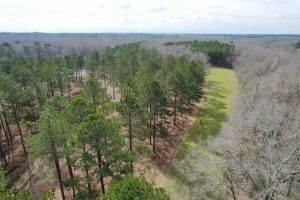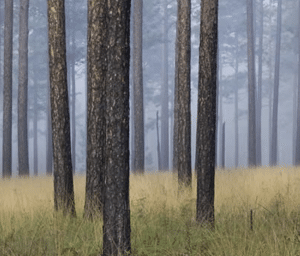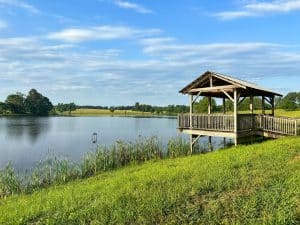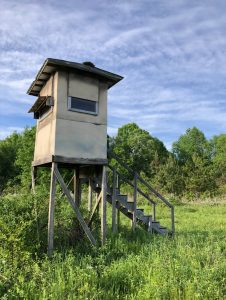Commercial Listings
Commercial Listings County All Counties Autauga Butler Clay Conecuh Coosa Covington Crenshaw Dallas Elmore Lowndes Macon Montgomery Pike Russell Talladega Tallapoosa Wetland Reserve Easment Wilcox Greenville Commons – 21 AC- Butler County...St. Lukes Drive
IMG_9714IMG_9719Screen Shot 2022-10-27 at 11.07.04 AMIMG_9716Screen Shot 2022-10-27 at 11.07.23 AMScreen Shot 2022-10-27 at 11.07.51 AMScreen Shot 2022-10-27 at 11.08.07 AMIMG_9717 St. Lukes Drive 7,856 SF Health Care Bdg.432 & 448 St. Lukes Dr.Montgomery,...Investment Property in Alabama: Jim Main’s 30-Year Journey

I’m very grateful to my friend Jim Main, a former Alabama Supreme Court Justice, for joining me at my office in Montgomery and discussing investment property in Alabama. During our conversation, he generously shared his wisdom and experience concerning wildlife management and land management on his family farm. This is part one of our fascinating conversation, so stay tuned!
Buying Investment Property in Alabama
John: 30 years ago, we were searching for investment property in Alabama for you to purchase. What made you decide that you want to purchase land? And why did you want to buy land in Bullock County?
Jim: Yes. We bought the investment property in Alabama you helped us find in December of 1994. First of all, I wanted to diversify my assets. Real estate was something I didn’t really have other than my home. I didn’t want to have rental property because I’m not good at that fixing stuff.
Second, I spent much time on my grandfather’s farm as a youngster. Later, my Dad and brothers purchased farmland in Alabama. It was just logical that I should buy a farm, too.
The main reason was to diversify my resources for future retirement. However, I recently thought of something more important than the money aspect of owning land. As you retire while still in good health, you seek purpose and fulfillment.
My tenure as an Alabama Supreme Court Justice ended at 74, and with the mandatory retirement age, I was compelled to step down. I wasn’t ready to retire fully.
The farm has given me the outlet to start a new semi-career. I have been focused on how I can improve it, what I could add to it, and how to make it more fun for my children and grandchildren. For almost four years, I have been retired. I’ve been as busy as when I was working. But it’s a whole different thing because it’s not the pressure of a job that is your vocation.
Investing in the land turned out to be a smart move, with its value increasing fivefold over the last three decades. At this point in my life, the land holds great importance. It provides me with daily activities and keeps me focused on achieving the next step in its development.
John: When growing up, did your Dad buy investment property in Alabama?
Jim: He did. He was a land investor.
John: I assume you learned about the land from him and your grandpa.
Jim: In hindsight, I wish I had paid closer attention. My father was a pharmacist who had a drugstore. He would get up at daylight many mornings to look at land for sale. Dad would laugh and joke that he looked at a thousand acres for everyone he bought. Acquiring acres of land was like a part-time job. I learned from him about farm lenders and select timber cutting to help make the down payment.

Land Management
John: Your father was an astute, patient land buyer. That’s what it takes if you’re trying to buy land for a timber investment. You must be very picky and focused and try to make your money on the front end when you buy the investment property rather than when selling it.
You’ll come out well if you make a decent buy front end, even if the economy, land prices, and timber prices go up and down. You are buying the land for the long run.
You and Gale were kind enough to tour your property with my wife and me. I was so impressed with your accomplishments. You had done so much taking a piece of raw timberland and converting it to what we refer to as a “family farm.” You had added a couple of fishing lakes, a beautiful hunting lodge, a barn, expanded the road system, added wildlife plots for deer and turkey, and more.
Your land has been a work in progress since you bought it almost 30 years ago. You’ve been a great steward of land management. What have you learned through this land management, stewardship, and conservation process?
Jim: My journey has been a learning experience, especially in understanding the realities of an American farmer’s life. We planted fields for doves and green fields for deer, only to face the challenges of drought and unpredictable weather. Witnessing the impact of time and money being at the mercy of nature has given me an immense appreciation for farmers.
Land management is difficult. I’m thankful I’m not dependent on making a living from these crops. I certainly have a greater appreciation for farmers. We named our property Wildwood Farm. For the past 30 years, we have worked on projects to improve the place year by year. We figuratively had a blank sheet of paper.
Our property, Wildwood Farm, has been an ongoing project over the past 30 years, each year dedicated to improving it. We began with at least five hundred acres of pine timber that had been clear-cut.
We had a blank canvas to work with, and we embarked on unique initiatives, such as planting orchards with fruit trees, pecan trees, sawtooth oaks, and a scuppernong vineyard. It has been a 30-year education in land management.
John: Your son, Saxon, plants a beautiful garden each year.
Jim: Yes, we enjoy having a garden. When I retired, I decided we needed bees for pollination. I attended “bee school.” We’ve been in the honeybee business for the last three years or so.
Investing in Bees for Pollination
John: Have you harvested honey?
Jim: Yes, indeed. Our four bee hives yield around 50 gallons of honey per year.
John: Do you have a beekeeper man, or are “you the man”?
Jim: I’m the man with my son Saxon.
John: Do you have to put on a big hazmat-type suit?
Jim: Yes. However, the secret is to leave the bees alone. Except during the spring, you must open the box to see if they’re overcrowded. When they reach about 50,000, the queen bee will take half the hive and find another place to live. The remaining bees will find another queen cell. If you give them another box to work on, they might not leave.
July is a good time to remove the honey, ensuring they have plenty of time over the last part of the summer and fall to produce more honey. And, of course, the pollen becomes protein for the bees. We get to October and still have something flowering on the farm.
John: I know that’s been fun, rewarding, and a good learning experience. I am sure that your grandchildren enjoy the honey bee project.
Jim: The most significant lesson was when we first bought the land, a commercial beekeeper came to us and offered us four quarts of honey a year if we let him put two hives on our property.
For 15 to 20 years, we had persimmon, crabapple, and plum trees. The trees were so full of fruit the limbs were almost breaking off. Unfortunately, the beekeeper left the business, taking his hives with him. As a result, the trees bore only half the fruit for the next couple of years, making us realize the importance of pollination rather than just honey production.
That was a big lesson for me and my family in the importance of bees in land management.
Conclusion
As we conclude part one of my captivating interview with Jim Main, I am in awe of his 30-year journey in land management in Alabama. His dedication and vision have transformed a piece of land into a thriving investment property and a cherished family farm. Jim’s story is an inspiring example of foresight, dedication, and the rewards of wise real estate investments.
Stay tuned for part two, where Jim will share his strategies for wildlife management, including hogs, deer, ducks, and fish.
Take time this week to enjoy Alabama’s outdoors,
Learn more about buying land in Alabama by reading “Prepare to Buy Land in Alabama.”
3 Types of Property: Finding Property Tailored to Your Lifestyle
By Clark Grey
Finding Property
When it comes to finding property, numerous considerations come to mind. In addition, different motivations drive the decision to buy property. The three most commonly requested property types are investment opportunities, recreational use, and rural living.
1. Investment Opportunities

Investing in land is a compelling reason to explore property ownership. Furthermore, residential and commercial development land presents limitless possibilities for investment. Whether for cropland, livestock-raising, or timberlands, land can provide both personal enjoyment and a source of income. Well-managed timber, for instance, can be a lucrative long-term investment, yielding returns over 25-30 years. We can find properties suitable for the type of investment you desire.
2. Outdoor Recreation

Many individuals purchase land to immerse themselves in outdoor recreational activities. Plus, the beauty of owning recreational land is the freedom to entertain family and friends. From ATV riding and fishing to camping, hunting, hiking, horseback riding, or simply finding solace and relaxation amidst nature, the options are endless. Your lifestyle and interests will shape how you make the most of your recreational property. John Hall and Company can help you find properties and connect you with our trusted partners. These are referral partners to develop the land you want. Finding the right property and buying land is the ultimate investment during uncertain times.
3. Rural Living

Rural living remains a tremendous motivator for land buyers. However, rural living may not suit everyone. Rural land offers the opportunity to acquire larger lots unavailable in urban areas or established suburbs. Owning acres of land allows you to grow a garden, create a mini-farm, and enjoy peace and privacy. We can find properties to give you a more secluded lifestyle away from noisy neighbors.
While there are numerous other factors to consider when purchasing property, these three are the most common criteria people seek.
- What are your land-owning goals?
- What do you envision your land doing for you?
I am here to assist you in assessing your land needs and finding the perfect property for you and your family. Don’t hesitate to contact me, Clark Gray, at 334.391.9249 for any questions or inquiries. Explore our other available properties here.
At John Hall and Company, we dedicate our time to helping you discover the property that best aligns with YOUR unique lifestyle and interests!

